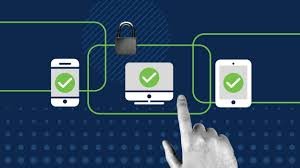As the digital threat landscape grows increasingly sophisticated, safeguarding data and infrastructure has become a non-negotiable priority for both enterprises and individuals. Traditional antivirus solutions are no longer sufficient; modern cybersecurity now demands multi-layered, intelligent defense mechanisms that secure endpoints, networks, and user identities in real time.
Understanding Security Software: Beyond Basic Protection
Security software encompasses a comprehensive suite of tools designed to detect, block, and neutralize a spectrum of cyber threats—ranging from legacy malware to emerging zero-day attacks. These platforms act as a digital control layer, preventing unauthorized access, ensuring data integrity, and enabling resilient system recovery.
Core Functionalities Include:
- Advanced Threat Detection: Leverages behavioral analytics and machine learning to detect anomalies, malware, and zero-day exploits.
- Firewall & Network Controls: Shields against external threats through dynamic filtering and real-time traffic monitoring.
- Data Encryption: Ensures confidentiality during storage and transmission, meeting regulatory requirements.
- Intrusion Prevention Systems (IPS): Actively blocks exploits and suspicious system behaviors before harm is done.
By integrating these capabilities, organizations can proactively mitigate risk and establish a resilient security posture that adapts to evolving threats.
Endpoint Protection: Safeguarding the Perimeter
In today’s hybrid work environment, where employees operate from distributed locations using diverse devices, endpoints have emerged as the primary attack surface. Endpoint protection platforms (EPPs) serve as the first line of defense, securing laptops, mobile phones, desktops, and IoT devices from exploitation.
Strategic Features of Endpoint Protection:
- Real-Time Monitoring & Response: Constantly scans for and reacts to threats at the device level.
- Automated Remediation: Identifies compromised assets and initiates self-healing protocols.
- Zero Trust Enforcement: Validates users and devices before granting access—minimizing lateral movement within networks.
- Offline Security: Maintains protection and audit trails even in remote, disconnected environments.
For large organizations, EPPs integrate seamlessly with SIEM and SOAR platforms, creating a cohesive, scalable threat defense infrastructure.
A comprehensive security suite offers more than malware scanning—it should provide integrated protection across user identity, device security, data privacy, and recovery readiness.
Key components to consider:
- Next-Gen Antivirus & Anti-Malware Engines – Continuously updated to recognize both known and emerging threats.
- Encrypted Virtual Private Network (VPN) – Secures online activity and protects user anonymity.
- Cloud-Based Backups – Enables fast restoration following data corruption or ransomware attacks.
- Identity Monitoring & Fraud Alerts – Tracks digital identities and provides early warning of credential exposure.
- Parental Controls & User Access Governance – Allows administrators to manage device access, screen time, and online content.
Many leading platforms also incorporate password managers and system optimization tools, enhancing both usability and performance without compromising security.
Conclusion: Security as a Strategic Imperative
Cybersecurity is no longer just a technical requirement—it is a business-critical function that directly impacts reputation, compliance, and operational continuity. Whether protecting a global enterprise or a remote workforce, investing in advanced security software and endpoint protection is essential for resilience in a volatile threat landscape.
Forward-looking organizations are not just defending against threats—they are embedding security into the very fabric of their digital transformation strategies.

